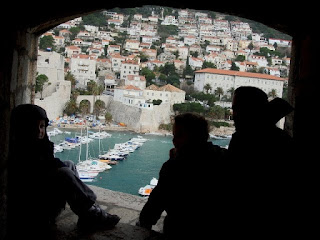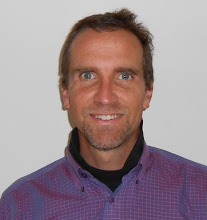Dubrovnik. It's a cool name. I know of it because of the bombings in the '90s. The city was bombed by Serbia. I think they did it as a kind of terrorist move that would scare them into staying in their country. To me, that sounds completely illogical. I'm trying to educate myself on the situation here. I

'm reading Balkans by Misha Glenny. It's a 700+ page brick that starts to explain the current situation with the relevant details from 1804. I started at the beginning and there were just to many vowelly challenged names: Zdrjac or Djnska--and even the name of the country known by many as Croatia--Hrvatska . I couldn't connect the dots. So I began with the Epilogue. At least there were things about which I have some memory--Bill Clinton, NATO, Slobodan Milosevic. (BTW on the flight from Albania to Rome at Spring Break, I was able to place my seat beside a teacher at school. She is from Serbia and her last name is Milosevic. She was also born in the same town where Slobodan grew up. She is not related--as far as she knows, anyway) Now I am reading Chapter 9 and I will leap backwards. I hope I will be able to sense of things.
We drove into Dubrovnik on December 30, 2009. Fortunately, we found a house with a couple rooms about 100 steps from the old city. The next day, the four

of us spent 90 minutes just walking around the wall. The old city has a wall around it that is wide enough at places for 7 people to walk abreast. I had

an image of running a m

arathon on the Great Wall of China. The old city protected by the walls has lovely buildings and apartments. There were cannons, rock windows, narrow stairs—it would have made a killer venue for a game of hide and seek—or something more sinister.

I felt a bit like a peep monster when I accidentally spied people cleaning their shoes or cooking dinner. It was interesting to see satellite dishes popping out of the stone walls, and among the clothes lines. Coming from my United States experience, just imagining that we are walking on stones that have been tread on for hundreds of years was awesome. It was awesome to see hear and FEEL the Adriatic crashing into the rocks. Even more was the feeling when we would be three stories above the sea.

While walking through the Tirana airport in October, I bought a small book on Dubrovnik. I wasn't sure when or if we would go there, but it seemed like a cool place. Although I knew the place had been bombed, I wasn't sure exactly WHO did the bombing. I had an ill-conceived notion that it was NATO who bombed Dubrovnik. Why? Well, I was thinking that maybe they wanted Serbian leadership, Slobodan Milosevic, to stop his practice of killing groups of people in his country. Dubrovnik is a big money-maker for the place. Kind of like, "You better stop killing your own people, or we will kill them so you will understand that it is not nice to kill them." The actual situation was that Serbia bombed Dubrovnik (in Croatia) because

they wanted them to stay in their country. "Be our friends, Croatia, or we'll beat the crap out of you." I always think that it is a hugely troublesome question when some section of the country wants to secede. There is a great feeling in my that says, "let 'em go."

On the wall inside the city is a placard that shows a map/diagram of the buildings in the city that were all or partially destroyed during the bombing. As far as our untrained eyes could tell, all of the damaged buildings have been repaired. It was interesting to pick out the roofs of old buildings with dirty red tile—500 years old—and rebuilt ones with clean red tile.
Just outside the city the Adriatic Sea was ferociously pounding the rocks on shore. The constant noise and bluster was as loud as a grain dryer. To simply stand so near and feel safe was thrilling, not to mention the feelings when we overlooked the crashes from three stories straight up.











